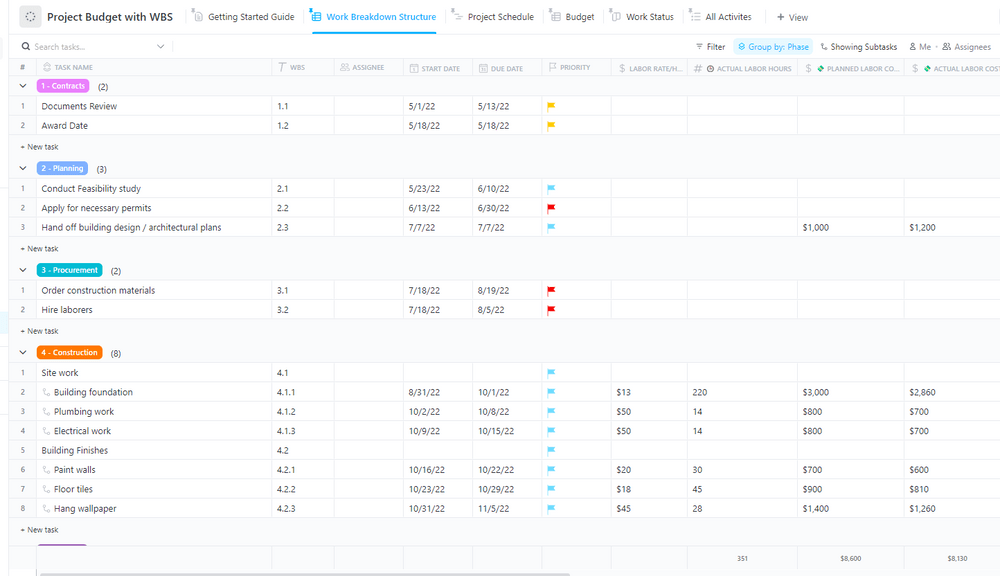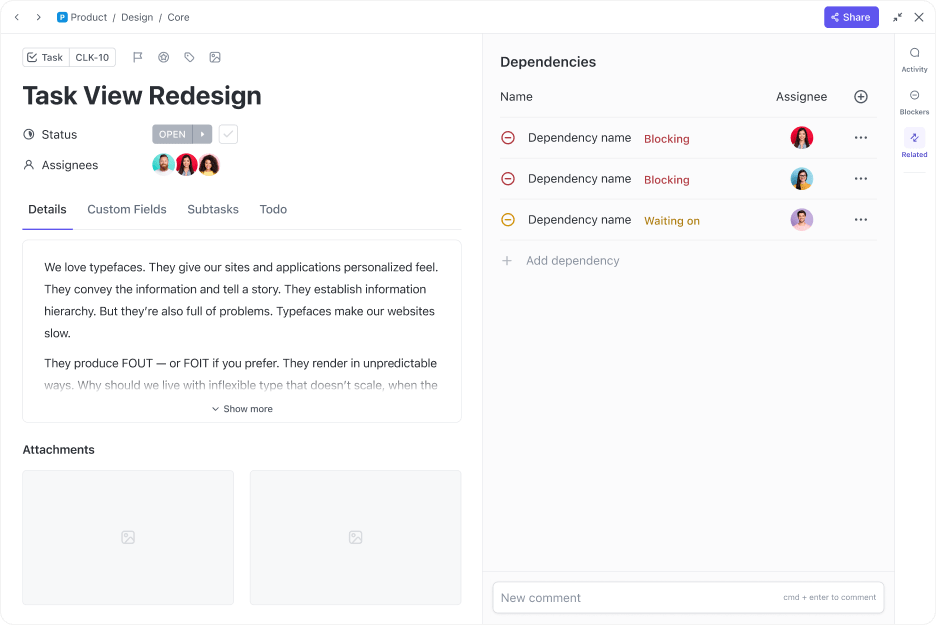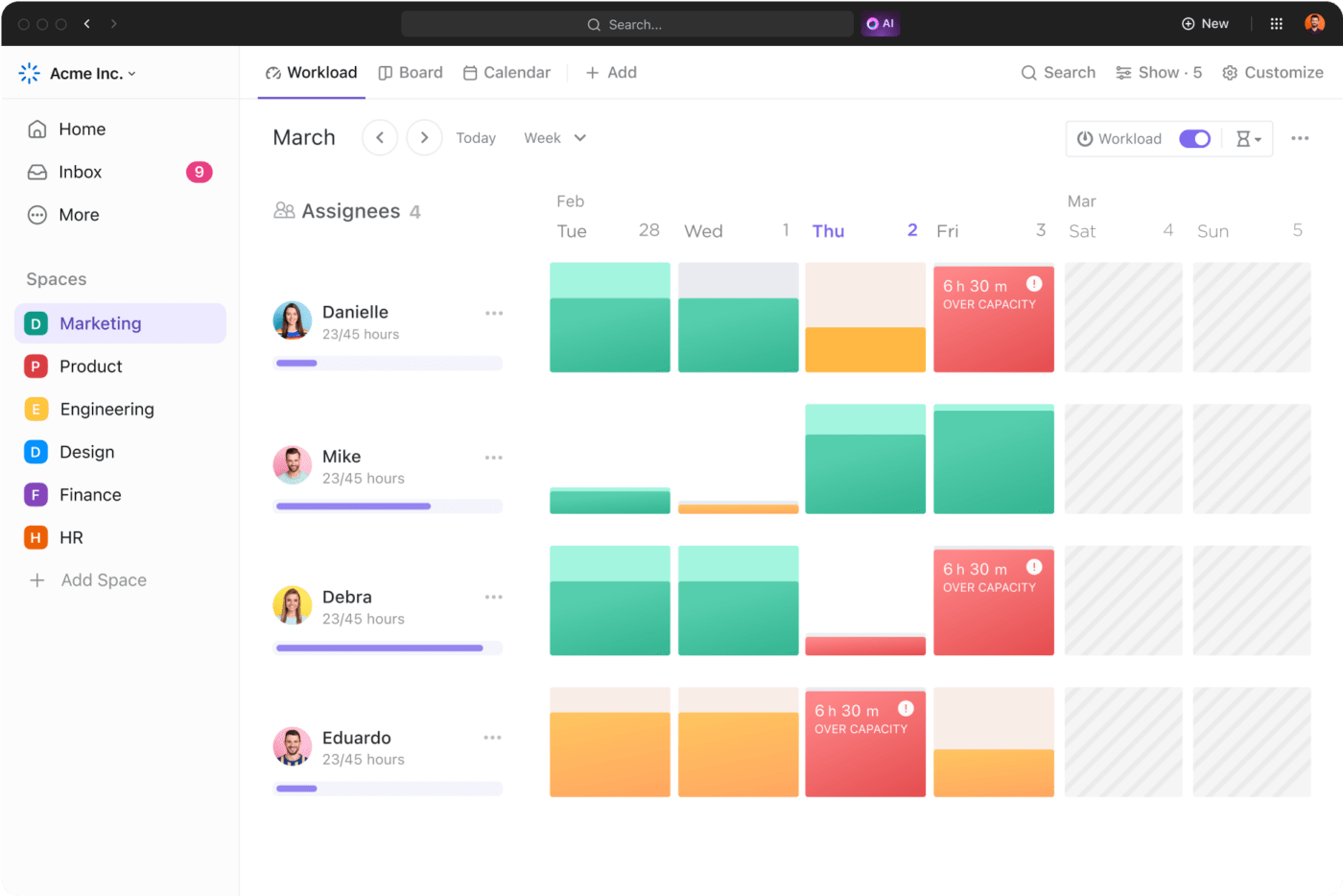Project Management Resources: Types, Significance, and Planning Process

Sorry, there were no results found for “”
Sorry, there were no results found for “”
Sorry, there were no results found for “”
What would a painter be without their paint? An -er! 😅
The joke might be redundant, but resource management certainly isn’t. This behind-the-scenes process plays a pivotal role in the success of any project. The truth is—even if all your materials are high-quality and all the people are capable, it won’t matter if you don’t know how to put them to good use.
To plan and execute a project effectively, you must be aware of the resources you need and the ones you have. You must also be adept at resource management. Only then can your project run smoothly and achieve favorable outcomes.
We’ve devised this guide to help refresh your knowledge about project management resources. You’ll learn about the different resource types, how to identify and manage them, and how resource management software can simplify these processes.
Project resources represent anything you depend on for the project’s successful completion. Resource management is the process of planning and using these elements.
Project management resources can be physical, such as tools and materials, and intangible, such as time and effort.
Physical resources have a specific monetary value. They can be temporary or fixed depending on how long you have them at your disposal. That said, intangible resources like contracts can have an expiration date, too.
We can also classify project management resources as internal or external. Internal resources are your company’s assets, such as office spaces, whereas external resources are those you obtain or hire from the outside. Examples of external resources include contractors and vendors.
Pro tip: To stay on top of all resources, use a robust resource management software like ClickUp. Project managers use ClickUp as an all-in-one hub for planning resources and work. The tool’s versatile features and customization options allow seamless integration into any project workflow.

Let’s illustrate the importance of managing resources with an example:
Imagine you’re a project manager overseeing the development of a critical app.
Since you didn’t spend enough time planning, you’ve failed to set a realistic timeline and determine the resources needed to complete the project. As development kicks off, things start to go south quickly. Developers and other project participants are racing against time, under pressure, and not doing their best work.
The result is—a subpar app that’s way past its deadline. It’s riddled with bugs and needs many revisions, ultimately costing way more than anticipated. Everyone, including the client, is dissatisfied.
Such a disorganized approach may fly when the company is small, but not if you’re managing big projects for enterprises that deal with multiple projects simultaneously. In this scenario, you must adopt a strategic approach, carefully analyzing project requirements and allocating resources accordingly. An ambitious but feasible project schedule accounts for inevitable emerging issues and ensures your team works stress free and efficiently. You can meet deadlines without compromising quality, potentially even exceeding the client’s expectations. 🏆
While resources in project management can be classified in many ways, in this article, we’ll cover four basic types:
Learn about each type, its significance, and examples in the following sections:
Money is the most valuable resource for any project. It represents the foundation for all other project management resources, such as materials and labor. That’s why you must manage it meticulously from the start. 💵
Financial support for your project can come from various sources, such as:
When making financial decisions, lean on cost-effective options. The worst-case scenario is—you’ll end up with some money to spare. On the other hand, if you run out of funding mid-project, the entire operation will be compromised.
Pro tip: ClickUp’s Project Budget with WBS Template presents a simple but effective way to manage your project spending. It includes a Work Breakdown Structure (WBS), which lets you track even the most minor expenditures.

Material resources are total assets your company owns or lends that make your project come to life. They include:
Pro tip: ClickUp offers various templates to help you manage material project resources. For instance, the ClickUp Inventory Management Template is ideal for tracking project resource availability, order statuses, vendors, and pricing. With the ClickUp Asset Management Template, you can maintain the records of your equipment inventory, condition, and repairs. 🛠️

The people making your project happen are the trickiest resources to manage because they introduce an array of variables you need to consider before making plans. They are unique personalities with their distinct commitments, traits, and skills. They’re also essential for conducting all the project operations, from ideation to execution. 👥
That’s why recruiting project team members, developing them, and keeping them content necessitates devoting significant time and financial resources. According to the Project Management Institute’s research, talent deficiencies can hinder 40% of strategy implementation efforts.
Human resources may include:
Pro tip: Did you know that ClickUp doubles as a team management tool? It streamlines recruitment, onboarding, and administration. With over 100 pre-built HR templates, you can handle any HR process effortlessly.

Although it’s the work that drives the project forward, the time this work takes is an essential resource to consider when planning. Time is money—the project can’t be dragged out to infinity and beyond. It must follow a schedule to stay within budget and avoid interfering with other commitments.
Time depends on various other project management resources as well. For example, the more people work on a specific task, the less time it’ll take them to finish it. If the task’s completion depends on a particular limited material, you’ll need to supply a sufficient amount of said resource to prevent unnecessary holdbacks.
At first, estimating how much time project tasks will take you may be difficult—unless you track time. By doing so, you’ll be able to allocate time slots to tasks more accurately in the future and set realistic project timelines. ⌛
Pro tip: ClickUp allows you to record time from any device and quickly generate reports for analysis.

If you want your project to run hiccup free, begin preparing well before the project’s start date and be mindful of how you manage resources.
In the next section, we’ll share the necessary steps for project resource management. You’ll also learn about some handy management techniques such as resource leveling and forecasting.
Creating the project plan is the first step in any resource manager’s playbook. List all information that’s crucial to the start of project work, such as:
Knowing the specifics of your project activities will help you assess their required resources.
You should involve the whole team in the resource planning process. They’re experts and may have experience with similar projects, and can give you pointers to help with resource forecasting.
You can then make more precise estimations on how much time and other necessary resources each project task needs and allocate them effectively. 🔮
Before determining how much of each resource to set aside, you must collect data on currently available assets. The primary resource you should look into is the budget. After you’ve covered the basics, give your attention to:
By ensuring you have all the means to successfully start the project without delays, you create a solid foundation that you’ll build upon.
Once you have all the necessary information, work out an official resource plan. This document will guide upcoming resource management efforts across the team. Define all your project resource requirements and include their descriptions, necessary quantities, and procurement deadlines.
In this stage, you must align your resource schedule with the project schedule. Resource scheduling prevents delays and ensures that all equipment and materials can arrive on time so your team doesn’t have to waste time waiting. If you need to hire external contractors, ensure they’re available to perform their work when needed. 📝
Resource allocation is the crux of your resource management strategy. At this stage, you must employ all your mental power and time management skills to determine who will use which resource and when.
Many resources are limited, so creating a precise schedule beforehand is necessary for two deciding factors affecting the project’s success:
This process of assigning resources to different project tasks is known as resource loading and it’s an integral part of the planning period.
When allocating work to team members, consider their availability and assign work accordingly. Although it sounds appealing in theory, filling out their time to reach 100% capacity is not a good idea. Unforeseen circumstances happen all the time—if one of the team members gets sick, others will have to fill in for them. Leaving some wiggle room for those situations will help keep your project on schedule.
It’s crucial to be adaptable and promptly re-adjust dates or re-assign resources to solve emerging issues and prevent overworking. We call this process resource leveling.
You should monitor how resources are being used to ensure you’re not running behind schedule or over budget. To get the most accurate insights, you should determine your key performance indicators beforehand and measure progress as you move down the project life cycle. Doing so will allow you to detect problems quickly and act on them before they derail the entire project.
Once the team finishes the project, you can analyze these metrics to understand the effectiveness of your resource management efforts. This way, you’ll know exactly what went well and what you should improve in the next project. 📈
Resource planning is likely the most challenging aspect of project management. It requires you to think miles ahead. If you make one wrong choice, the entire project might go haywire. Thankfully, you have resource management tools like ClickUp at your disposal to ensure you have everything you need for project take-off. 🛫
Below, we’ll explain how to use ClickUp to plan and manage resources for any project. You can start from scratch or take advantage of ClickUp’s many ready-made templates. For starters, you may find these two helpful:
Here’s how to make the most of ClickUp’s comprehensive project management features:
ClickUp’s Project Hierarchy allows you to organize and streamline your entire resource management process. Create your Workspace, add a task for each work item, and assign it to the responsible team member. Define task dependencies to clarify the sequence of tasks and avoid bottlenecks. 🔗

Use one of ClickUp’s Automations or build custom ones to optimize your workflow and scale your operations. With Automations, you don’t have to waste time on repetitive manual work and can focus on managing resources instead.
ClickUp further simplifies cross-functional collaboration and communication—use the Task view to add descriptions, checklists, and files and help assignees execute their work seamlessly. When you need direct input from team members or stakeholders, request it in task comments or via ClickUp Chat.
ClickUp comes with over 15 customizable views, enabling you to manage and track any aspect of resource planning with ease. Get a clear overview of current and outstanding resources by leveraging:
Assign each resource a priority label so your team knows what to tackle first. You can also add Custom Fields, such as statuses and formulas, which can automatically calculate your costs.
Once you have all the info, draft your resource management plan with ClickUp Docs—the platform’s built-in text editor. For resource scheduling, you can use the ClickUp Gantt view or Calendar view to visualize the timeline of upcoming resource management efforts.

Build custom ClickUp Forms to request vendor information, such as pricing and inventory. Store and organize all the collected data for easier cost-benefit analysis and decision making. With ClickUp’s Map view, you can check out the exact location of each vendor or facility without leaving the app. 📍
Now it’s time to put your resource plan into action with resource allocation. Use ClickUp’s Workload view to appoint work to team members based on availability. Define their capacity using indicators like:
You can even add a Custom Field to adapt the view to the workflows of specific teams. After that, all that’s left to do is choose how you want the view to appear, including the period displayed.

As your team completes work and uses resources, they can mark their progress on the platform. Using over 50 cards, you can build a custom ClickUp Dashboard to assess performance at a glance. You can also specify your objectives in ClickUp Goals and track your progress toward them with measurable Targets.
How you handle project management resources can make or break your project outcomes. Effective resource planning and allocation positions your team for success, ensuring on-time and stress-free project delivery.
Resource management is a complex operation, but you can simplify it by reaping the benefits of project management software like ClickUp. Try ClickUp for free and use it to make the most delicious lemonade out of the lemons you were given! 🍋
© 2026 ClickUp